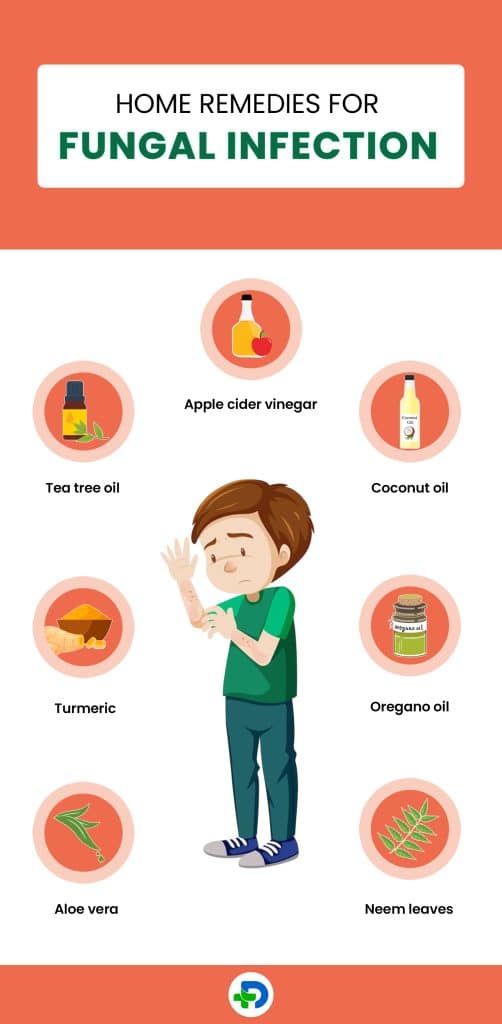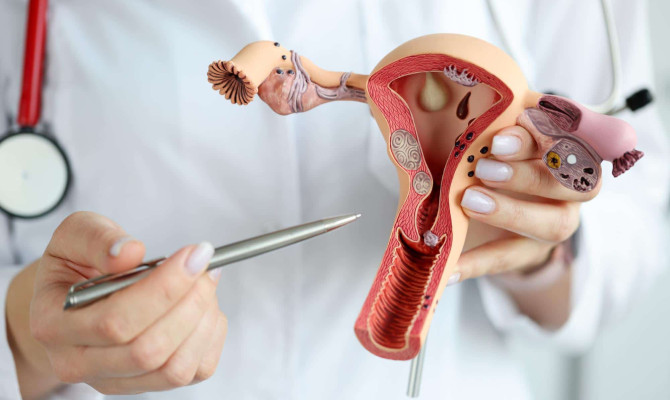Fungal infections: Symptoms, Causes, and Management

- Fungal Infection
- 16 Aug 2023
Overview
What is a fungal infection?
Fungal infections (mycosis) are skin illnesses caused by fungi viz; mold or yeast.1Overview | Researched based study from Sciencedirect.com
Fungi are microbes living in any habitat but are mostly found on land or other plant body. Some fungi are eatable such as mushrooms, while others, viz, aspergillus, are very hazardous and cause fatal infections in humans.

Facts
Facts of fungal infection
- Fungal infections can affect anyone, including healthy individuals
- Fungal infections occur when fungi enter the body and become established, and our body’s immune system is unable to prevent them.
- Fungal infections can affect any area of the body, including the throat, mouth, and lungs. They are frequently seen in nails, hair, mucous membranes, and skin.
- Fungal infections can be transmissible and spread from person to person.
- Humans can get fungal infections from infected surfaces, soils, or animals 1Facts | Researched based study from Sciencedirect.com
Symptoms
What are the signs and symptoms ?
Fungal infection above or under the skin
- Painless or Painful swelling under the skin surface
- Redness
- Itching
- Rash
- Irritation
- Pimple
- Scaly skin
- White patches in the throat and mouth
- Discolored, cracked nails .2Symptoms | Researched based study from Nlm.nih.gov
Fungal infection in Lungs
- Fever
- Excessive tiredness
- Breathing difficulty
- Excessive coughing
- Blood in cough (in some cases)
- Excessive night sweating
- Headache
- Joint pain
- Muscle pain
Fungal infection of Eyes
- Blurred vision
- Eye Redness and irritation
- Itching
- Sensitivity to light
- Tearing from the eyes
- Unusual discharge from eyes2Symptoms | Researched based study from Nlm.nih.gov
Symptoms of intestinal tract fungal infection
- Nausea
- Vomiting
- Stomach cramps
- Change in bowel moments (Constipation or loose motions)
- Bloating
Symptoms of fungal infection in the brain
- Neck pain
- Nausea and vomiting
- Headache
- Irritation to light
- Confusion 2Symptoms | Researched based study from Nlm.nih.gov
Types
Types of common fungal infection
Ringworm
- A mold-like parasite on the outer skin layer causes ringworm.3Types| Researched based study from Cdc.gov
- It is transmissible and spread from person to person through direct skin contact with an infected individual.
Symptoms are
- It first starts as an itchy rash later patches appear like a ring with a red outer border .
- Patches may get pimples that begin to leak .
- Hairless patches on the scalp(if infection occurs on the head)
- Cracked and discolored nails (if the condition occurs in the nail)
Yeast infection
- Candida albicans cause yeast infection
- It infects the mouth, skin, digestive tract, genitals(sexual organs), and urinary tract.3Types| Researched based study from Cdc.gov
- People on extended antibiotic treatment develop a yeast infection .
Symptoms of common yeast infections
- Itchiness at affected area .
- Painful and Swollen patches
- Redness of affected area.
- Broken skin
- Recurrent UTI with unusual discharge from Vagina , itching and irritation in and around vagina .
- Painful patches on and around penis.
- If Mouth or throat is affected then white patches in the mouth and painful chewing and swallowing occurs .
Athlete’s foot (tinea pedis)
- Dermatophytes fungi cause athlete’s foot
- Dermatophyte fungi grow on warm moist areas in the middle of our toes.3Types| Researched based study from Cdc.gov
Symptoms are
Between the toes, the skin gets cracked with
- Itching
- Burning and pricking sensation
Jock itch (tinea cruris)
- Dermatophytes cause it .
- It affects the skin on the inner thighs and buttocks3Types| Researched based study from Cdc.gov
Common symptoms are
- Redness
- Burning sensation
- Itchiness
- Rash
- Cracked Skin
- Alter the skin color
Onychomycosis or tinea unguium (nail fungal infection)
- It is a frequent type of fungal infection
- It affects the toenails, fingernails, and the nail beds
- First appears as a minute spot on the nail
- Later alteration in the nail’s color and shape takes place
- With time the nail becomes dense and breakable
Symptoms of infection are
- Scaly nail
- Yellow or white stripe below the nail
- Thick nail
- Breaking of the nail
- Raising of the nail bed 3Types| Researched based study from Cdc.gov.
Causes
Causes of fungal infection
- Traveling to a place with a high prevalence of fungal infections
- People with feeble immune response .
- Using Common restroom, pools, etc .
- Not following hygiene rituals .
- Occurrence of new fungi due to environmental change 4Causes| Researched based study from Sciencedirect.com
Consequences
Consequences of fungal infection if untreated
If left untreated, fungal infections cause
- Excessive fatigue
- Chronic stomach problems
- Oral thrush(fungal infection in the mouth)
- Painful lesions
- Infertility in woman
- Blood infections
- Irreparable damage to the skin .
- Permanent damage to internal organs
- Can lead to death 4Consequences| Researched based study from Sciencedirect.com
Risk
Risk factors for fungal infection
- Increased weight
- Increased sweating
- Having problems in holding urine (urinary incontinence)
- Lack of body cleanliness
- Wearing body-fitting clothes and shoes
- Touching infected animals
- Touching things of the infected person
- Taking antibiotics for an extended period
- Skin care product reaction
- Having diabetes (high blood sugar)
- Pregnancy due to changeable hormone levels 5Risk factors| Researched based study from Sciencedirect.com
Vulnerability
Who are at risk ?
People with the following medical condition are at increased risk of fungal infections-
- Diabetes (high blood sugar)
- Cancer (abnormal cell growth)
- Coronary artery disease (blood flow problem due to deposition of wax in the blood vessels)
- AIDS (acquired immune deficiency syndrome) 8Vulnerability| Researched based study from Sciencedirect.com
- Weakened immune system (such as autoimmune disease)
- People on extended antibiotics 8Vulnerability| Researched based study from Sciencedirect.com
Management
Management of fungal infections
Management of fungal infections is a combined approach of medicine, diet, and home remedies.6Management| Researched based study from Sciencedirect.com
Antifungal medication (kills the fungus)
Clotrimazole
- Used for the treatment of oral, skin, or vaginal infections .
- It helps in preventing infection
- Available both for topical and oral use
Terbinafine
- It treats fungal infections of the scalp
- It kills the fungi by damaging their cell membrane
Miconazole
- It treats yeast and fungal skin, mouth, and vagina infections.
- It works by destroying the fungus cell membrane
Ketoconazole
- It treats severe fungal infections like athlete’s foot, jock itch, and certain dandruff.
Antifungal medications are available in various forms to opt for, like:
- Over-the-counter medication
- Intravenous medication (Fluconazole intravenous injection)
- Antifungal ointments or creams
- Nail Lacquer
- Shampoos
- Mouthwash
- Eye drops
- Ear drops 6Management| Researched based study from Sciencedirect.com
Diet modification
To prevent fungal infection, one should consume
- Vitamin C-containing fruits and vegetables in their diet, such as oranges, strawberries, kiwi, guava, papaya, broccoli, and cabbage.
- Apart from this, fermented foods such as curd and yogurt also help fight infections.
Remedies

Home remedies for fungal infection
Apple cider vinegar
- It has antifungal properties .
- Mixing two tablespoons in lukewarm water and applying the mixture to the skin gives a good result.
Tea tree oil
- It has antibacterial and antifungal properties .
- Mixing tea tree oil with olive oil and applying it in the affected area four times daily gives much relief.
Coconut oil
- It acts as a powerful antifungal agent
- Applying in the affected area thrice daily gives beneficial effects
Turmeric
- It has anti-inflammatory and antimicrobial properties
- Using turmeric paste on the affected gives relief .
- Ground turmeric in warm water and consuming it helps the body fight infections.
Oregano oil
- It has antifungal properties .
- Mixing oregano oil with olive oil and applying it in the affected area daily gives good results.
Aloe vera
- Aloe Vera has antimicrobial properties
- Applying aloe Vera to the affected area treats the skin infection and repairs skin damage.
Neem leaves
- It has antifungal properties
- Boiling neem leaves for 2 minutes and applying the water after cooling to the affected area helps treat the fungal infection.
Prevention
Prevention of fungal infection
- Maintaining good cleanliness and sanitation, frequent washing of the hands with soap water after touching animals or infected people
- Proper cleaning of the mouth and teeth .
- Regular cleaning of the nails .
- Wearing dry and cotton undergarments .
- Wiping the health club equipment with a clean cloth before and after using it .
- Avoiding sharing of towels and clothes with others .
- Keeping the whole body clean and dry when it’s hot and humid outside
- Ensuring that the skin folds of the body are without any moisture .
- Wearing shoes in public bathrooms .
- Taking a good shower before and after using public swimming pools 7Prevention| Researched based study from Sciencedirect.com.
Takeaway
Key Takeaways
- Fungal infections can be painful and intolerable
- Treatment may require a longer time, such as several weeks or months
- It is always advisable to contact a dermatologist in case of a suspected fungal infection
- The dermatologist may also advise changes in the daily food habit to avoid subsequent fungal infections.
Any feedback on this article?
 This Articles content was accurate
This Articles content was accurate Very Informative Article
Very Informative Article I have a question or a comment
I have a question or a comment
 This article contains inaccurate content
This article contains inaccurate content This article was not helpful
This article was not helpful I have a question or a comment
I have a question or a comment
We appreciate your helpful feedback!
Checkout our social pages
References
-
Science Direct
Fungal infections: Pathogenesis, antifungals and alternate treatment approaches | Overview
-
National Library of Medicine
Fungal infections | Symptoms
-
Centers for Disease Control and Prevention
Fungal Diseases -Types of Fungal Diseases
-
Science Direct
Fungal Study | Causes | Consequences
-
Science Direct
Risk Factors Associated With Invasive Fungal Infections in Kidney Transplant Patients | Risk factors
-
Science Direct
Antifungal agents | Management
-
Science Direct
Guidelines for the prevention of invasive mould diseases caused by filamentous fungi by the Spanish Society of Infectious Diseases and Clinical Microbiology | Prevention
-
Science Direct
Risk Groups for Acquiring Fungal Infections | Vulnerability




































